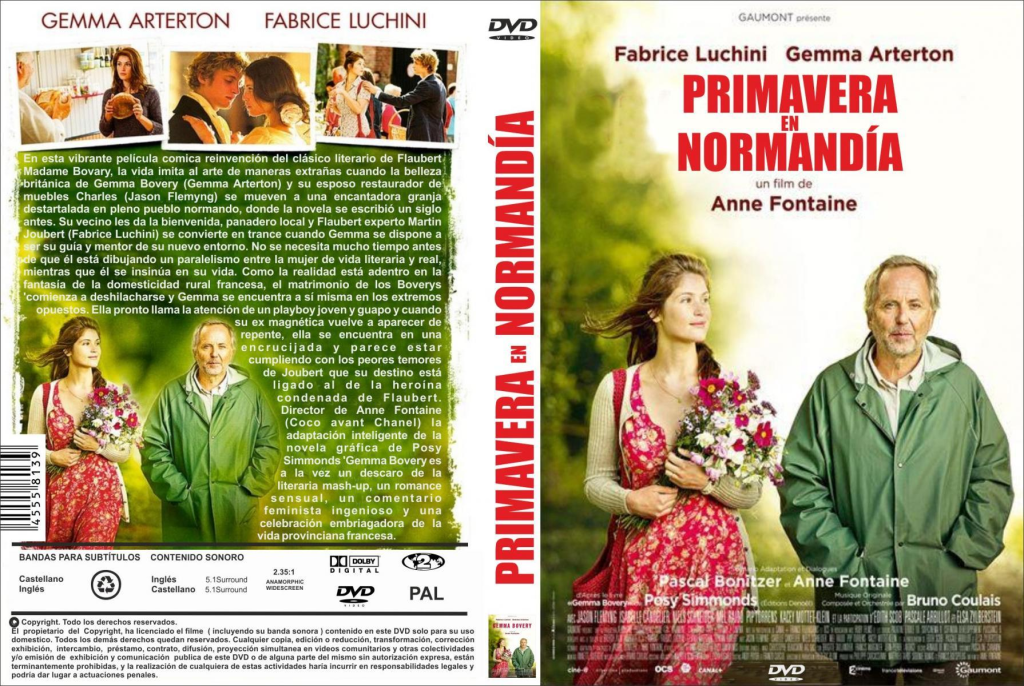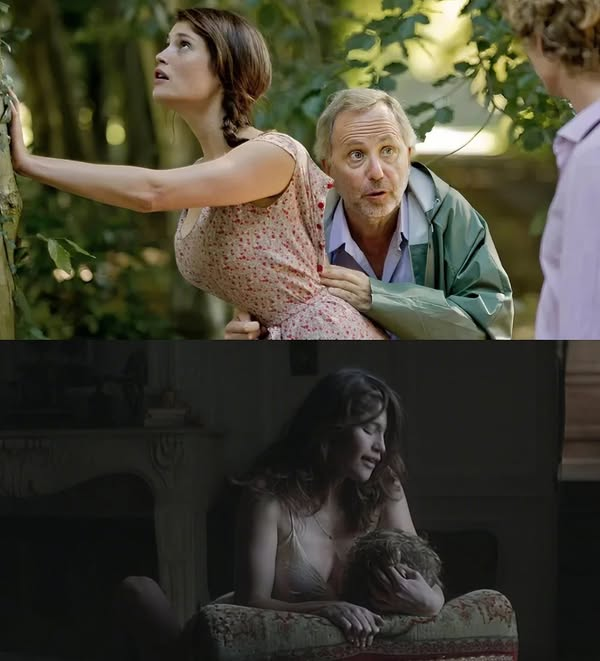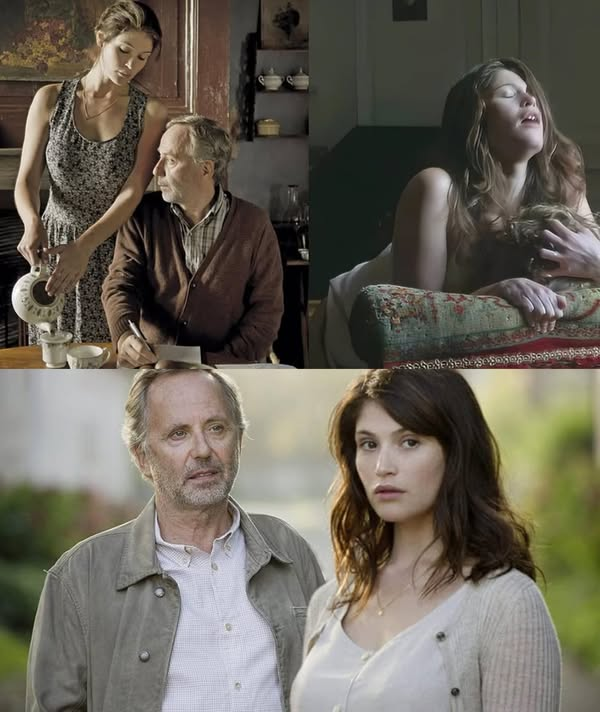Gemma Bovery (2014) — A French Comedy-Drama

Introducing Gemma Bovery: A French Comedy-Drama
Gemma Bovery (2014) is a French comedy-drama directed by Anne Fontaine, offering a modern, playful reimagining of Gustave Flaubert’s 19th-century novel Madame Bovary. Adapted from Posy Simmonds’ 1999 graphic novel of the same name, the film blends literary homage, romantic entanglements, and cultural satire with a distinctly Franco-British flavor. Starring Gemma Arterton as the titular character and Fabrice Luchini as a literature-obsessed baker, the movie premiered at the 2014 Festival du Film Francophone d’Angoulême and later screened at the Toronto International Film Festival. With its lush Normandy setting, witty dialogue, and exploration of desire and destiny, Gemma Bovery is a charming yet flawed cinematic confection. This article provides a comprehensive introduction to the film, delving into its plot, cast, production, themes, reception, and lasting appeal.

Plot Summary
Set in a picturesque village in Normandy, Gemma Bovery follows Martin Joubert (Fabrice Luchini), a former Parisian publisher turned baker with a deep passion for Flaubert’s Madame Bovary. Martin’s quiet life is disrupted when a British couple, Gemma (Gemma Arterton) and Charles Bovery (Jason Flemyng), move into a nearby farmhouse. The couple’s names and circumstances eerily echo those of Emma and Charles Bovary, the protagonists of Flaubert’s novel, sparking Martin’s fascination. He becomes convinced that Gemma’s life is destined to mirror the tragic arc of her literary namesake.
As Gemma settles into rural life, her initial enthusiasm for the idyllic countryside fades, giving way to boredom with her older, unexciting husband. Martin observes her growing restlessness, which manifests in flirtations and an affair with Hervé de Bressigny (Niels Schneider), a young aristocratic law student. Martin, both enchanted and alarmed by Gemma’s behavior, begins to see himself as a guardian of her fate, fearing she is headed for a downfall akin to Emma Bovary’s. His attempts to intervene, however, only complicate matters, leading to a mix of comedic mishaps and dramatic turns.
The film alternates between Martin’s voyeuristic perspective and Gemma’s own agency, culminating in a twist-filled finale that toys with the expectations set by Flaubert’s novel. While the story pays homage to its source material, it injects modern sensibilities and a lighter tone, blending farce, romance, and subtle tragedy.

Cast and Characters
Gemma Bovery features a talented ensemble that brings its literary-inspired characters to life:
- Gemma Arterton as Gemma Bovery: Arterton delivers a radiant and nuanced performance as the vibrant yet restless Gemma, balancing charm, sensuality, and emotional depth. Her command of French dialogue, learned specifically for the role, adds authenticity.
- Fabrice Luchini as Martin Joubert: Luchini steals the show as the obsessive, comedic narrator, whose love for literature and fixation on Gemma drive the story. His deadpan humor and expressive physicality make Martin both endearing and slightly creepy.
- Jason Flemyng as Charles Bovery: Flemyng plays Gemma’s affable but oblivious husband, providing a grounded counterpoint to the film’s more eccentric characters.
- Niels Schneider as Hervé de Bressigny: Schneider’s portrayal of the dashing, irresponsible Hervé adds a layer of youthful allure to Gemma’s temptations.
- Supporting Cast: Isabelle Candelier shines as Martin’s exasperated wife, Valérie, while Elsa Zylberstein and Pip Torrens appear in smaller roles, enriching the village’s quirky atmosphere.
The interplay between Arterton’s spirited Gemma and Luchini’s neurotic Martin anchors the film, with their contrasting energies fueling both humor and tension.

Production and Filmmaking
Directed by Anne Fontaine, known for films like Coco Before Chanel (2009), Gemma Bovery is a co-production between France and the United Kingdom, produced by Albertine Productions, Gaumont, and the British Film Institute, among others. The screenplay, co-written by Fontaine and Pascal Bonitzer, adapts Posy Simmonds’ graphic novel, which itself was serialized in The Guardian and drew inspiration from Flaubert’s Madame Bovary. The film’s tone, described by Fontaine as “Woody Allen-esque,” balances comedy and drama while exploring cultural clashes between British expatriates and French locals.
The production excels in its visual and sensory details. Cinematographer Christophe Beaucarne captures the sun-dappled beauty of Normandy’s countryside, from rolling fields to rustic farmhouses, creating a romantic yet ironic backdrop. The bakery scenes, with their tactile depictions of bread-making, are particularly evocative, highlighted by a memorable sequence where Martin teaches Gemma to knead dough—a moment laced with comedic innuendo. Costume designer Pascaline Chavanne outfits Gemma in modern, chic attire that contrasts with the village’s traditional aesthetic, emphasizing her outsider status.
The score, composed by Bruno Coulais, complements the film’s light-hearted yet poignant tone, with delicate melodies that evoke both French pastoral charm and underlying unease. Filming took place in Normandy, near the real-life setting of Flaubert’s novel, adding authenticity to the story’s literary roots.

Themes and Symbolism
Gemma Bovery explores several themes, often through a satirical and self-aware lens:
- Life Imitating Art: The film plays with the idea that Gemma’s life parallels Madame Bovary, raising questions about whether destiny is shaped by coincidence, perception, or Martin’s overactive imagination. This meta-narrative invites viewers to consider the interplay between fiction and reality.
- Boredom and Desire: Gemma’s restlessness reflects the ennui of Flaubert’s Emma Bovary, but her motivations are framed as modern—she is not inherently “bad” but simply unready to settle into a mundane life. The film critiques the romanticized notion of rural idylls, particularly for British expatriates seeking escape.
- Voyeurism and Obsession: Martin’s fixation on Gemma, tinged with both admiration and prurience, highlights the male gaze, a theme underscored by the camera’s lingering shots of Arterton’s figure. His role as narrator and meddler blurs the line between observer and manipulator.
- Cultural Clashes: The film pokes fun at Anglo-French stereotypes, from British dreams of a pastoral French haven to French suspicion of foreign newcomers. The “Franglais” dialogue adds humor while underscoring cultural differences.
Symbolically, the bakery serves as a grounding force, representing Martin’s attempt to find simplicity, while Gemma’s farmhouse embodies her unattainable aspirations. The recurring motif of rat poison, a nod to Madame Bovary’s tragic climax, becomes a running joke that both mocks and foreshadows the story’s outcome.

Reception and Legacy
Gemma Bovery received mixed reviews upon its release on September 10, 2014. On Rotten Tomatoes, it holds a 54% approval rating based on 90 reviews, with an average score of 5.99/10. The site’s consensus praises the film’s “bursts of charm,” particularly Arterton’s performance, but notes its lack of focus. Critics lauded the performances of Arterton and Luchini, as well as the lush visuals, but some found the tone uneven, oscillating between comedy and drama without fully committing to either. The New York Times described it as a “frothy modern sex comedy” centered on Martin’s midlife crisis, while Roger Ebert’s review criticized its lack of emotional depth, calling it “all construction and snooty winks”,.
The film performed modestly at the box office, appealing primarily to arthouse audiences in France, the UK, and Australia, where it was the opening film for the 2015 Alliance Française French Film Festival. Its blend of literary references and accessible humor made it a favorite among fans of French cinema and modern literary adaptations, though some felt it paled in comparison to Flaubert’s novel or Simmonds’ sharper graphic novel.
The film’s legacy lies in its playful take on a literary classic and its showcase of Arterton’s versatility, marking her debut in French cinema. It also highlights Fontaine’s ability to navigate diverse genres, from biopic to comedy-drama. For viewers, Gemma Bovery remains a visually delightful, if imperfect, exploration of love, literature, and the quirks of cross-cultural life.

Why Watch Gemma Bovery?
Gemma Bovery is a treat for those who enjoy witty, character-driven stories with a literary twist. Its blend of humor, romance, and gentle satire makes it an accessible entry point into French cinema, while its nods to Madame Bovary reward viewers familiar with the novel. The film’s strengths lie in its performances—Arterton’s magnetic Gemma and Luchini’s comedic Martin are a dynamic pair—and its evocative depiction of Normandy’s pastoral beauty. Though the ending has divided audiences for feeling contrived, the journey is entertaining, with moments of genuine charm and clever commentary on human desires.
Fans of romantic comedies, literary adaptations, or Franco-British cultural dynamics will find much to enjoy. The film’s light-hearted take on infidelity and obsession, coupled with its sensory pleasures (think fresh-baked bread and verdant landscapes), makes it a perfect escapist watch for a cozy evening.

Conclusion
Gemma Bovery is a breezy, visually captivating reimagining of Flaubert’s Madame Bovary, infused with modern sensibilities and a playful tone. Directed by Anne Fontaine and elevated by stellar performances from Gemma Arterton and Fabrice Luchini, it offers a delightful mix of comedy, drama, and literary homage. While its tonal inconsistencies and reliance on familiar tropes prevent it from reaching masterpiece status, the film succeeds as a charming exploration of love, boredom, and the blurred lines between fiction and reality. Set against the idyllic backdrop of Normandy, Gemma Bovery invites viewers to savor its wit, indulge in its sensuality, and reflect on the timeless allure of a good story.